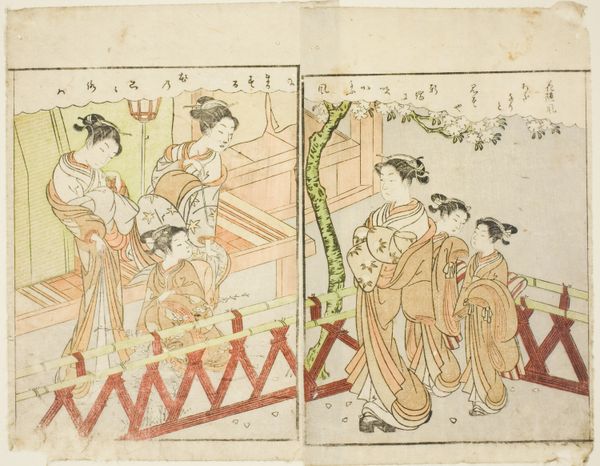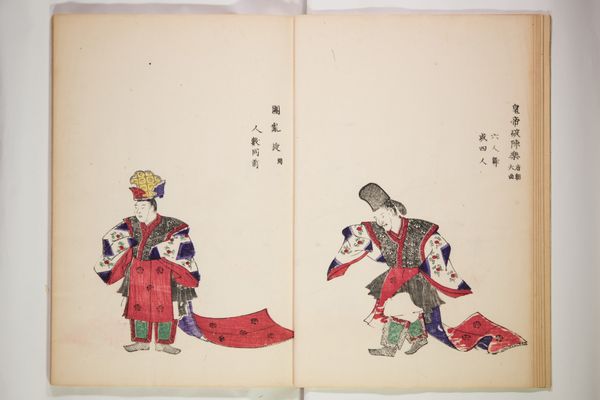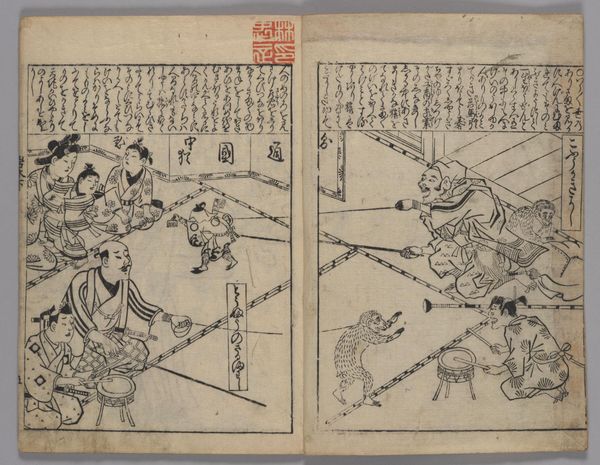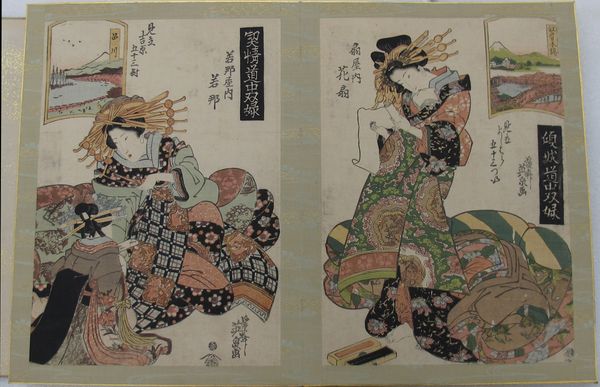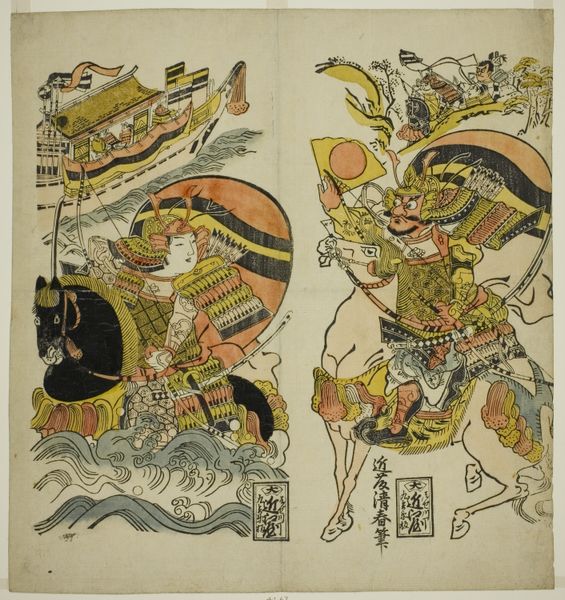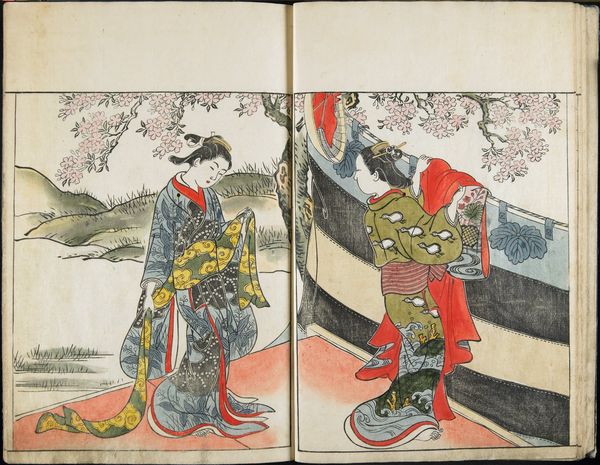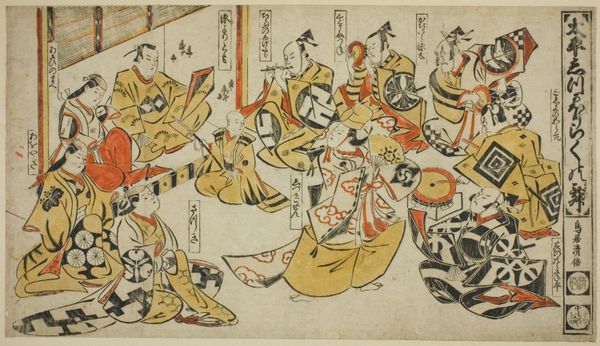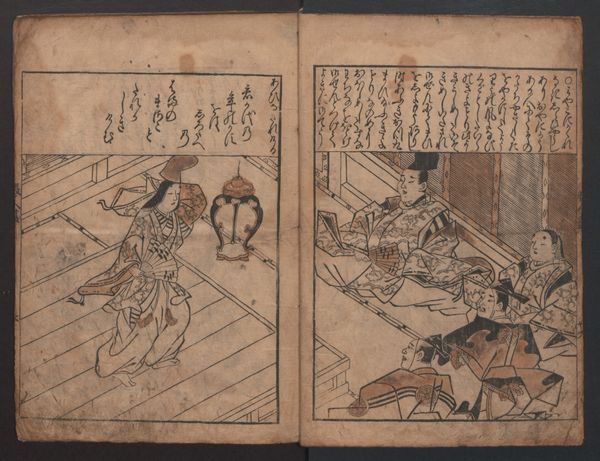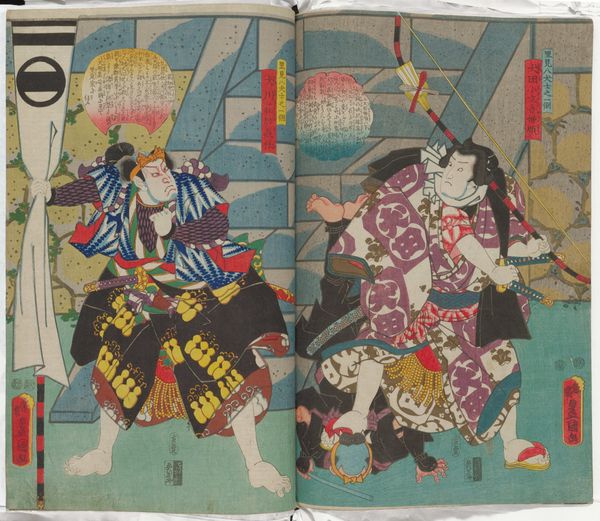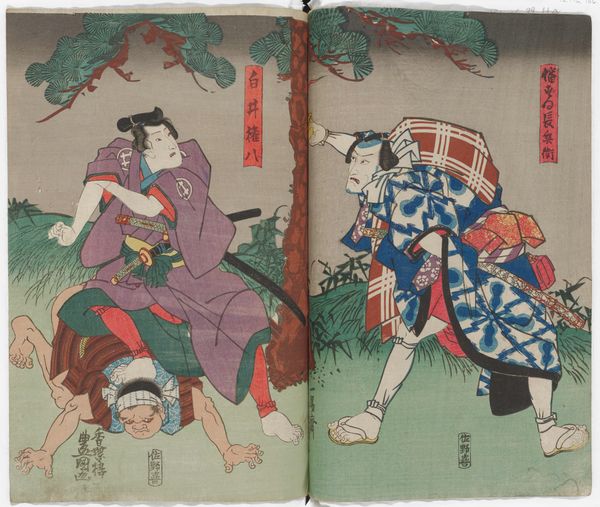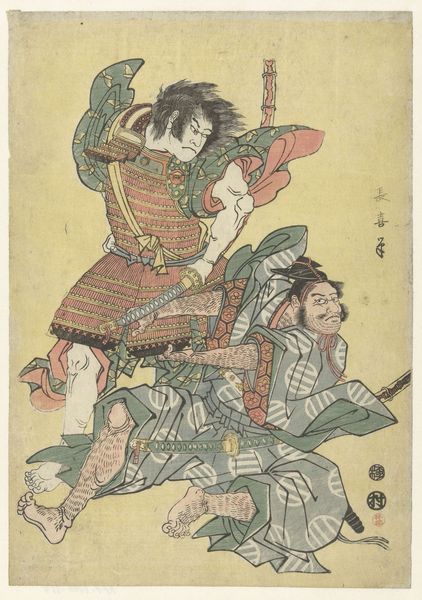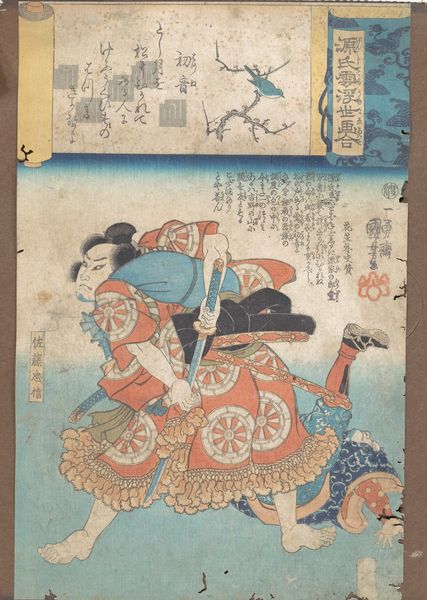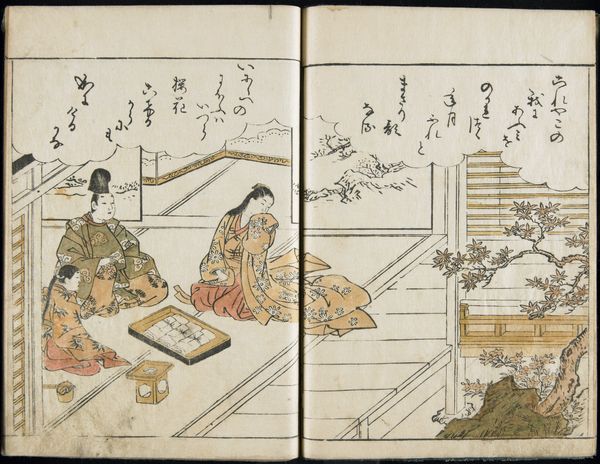
drawing, print, ink, woodblock-print
#
portrait
#
drawing
#
narrative-art
#
ink painting
# print
#
book
#
asian-art
#
ukiyo-e
#
ink
#
woodblock-print
#
soldier
#
men
#
sword
Dimensions: 10 7/16 × 7 1/16 in. (26.5 × 18 cm)
Copyright: Public Domain
Editor: This is "Picture Book of the Warriors' Sandals" by Kitao Shigemasa, created in 1787. It’s currently housed at the Met. The woodblock print shows two scenes of battling figures, brimming with dynamic energy. It’s hard to look away from the intensity and detail of the warriors. What strikes you when you examine this work? Curator: The immediate visual draw is indeed the action, but what truly interests me is how Shigemasa is representing labor through the very process of ukiyo-e. This print, seemingly simple, relies on a complex division of labor—artist, block cutter, printer. Look at the meticulous lines; that level of detail demanded collaboration and skill from specialized artisans. What do you make of the contrast between the noble subject matter of warriors and the rather common medium of a print? Editor: That's fascinating. It's true, you wouldn’t initially think about the contrast, but it’s stark. Does the choice of woodblock printing elevate the status of the warriors or perhaps democratize the imagery for wider consumption? Curator: Precisely! It’s both. Ukiyo-e brought images of the elite—actors, courtesans, and, in this case, warriors—to a broader audience. This act of reproduction challenges traditional hierarchies of art and social classes. We’re no longer confined to appreciating just the 'grand' paintings of the aristocracy; the means of production allow for a reimagining of consumption and status. The availability of prints makes it a commodity. The very act of producing art is changing society's values. How has considering materiality shifted your understanding? Editor: It has completely changed how I viewed the print; from an illustration of war, I now recognize it as a document representing production and distribution! Thanks. Curator: Indeed, viewing the print in this context lets us analyze not only art itself but the conditions under which it was made and consumed in 18th-century Japan.
Comments
No comments
Be the first to comment and join the conversation on the ultimate creative platform.
